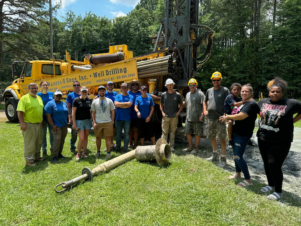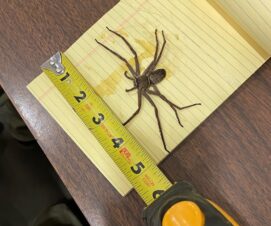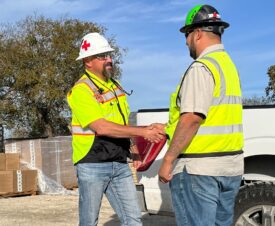Information provided by ASA
It has been a long time coming, but the U.S. Environmental Protection Agency announced on July 29, 2020 issuance of the final rule “Use of Lead Free Pipes, Fittings, Fixtures, Solder, and Flux for Drinking Water.”
In the final rule, EPA is implementing regulations associated with the Reduction of Lead in Drinking Water Act (RLDWA) issued in 2011 and fully implemented on Jan. 4, 2014. Some of you may remember this as the “Get the Lead Out” initiative.
The RLDWA amended the Safe Drinking Water Act with a new definition of “lead free:”
(1) Not containing more than 0.2% lead when used with respect to solder and flux; and
(2) Not more than a weighted average of 0.25% lead when used with respect to the wetted surfaces of pipes, pipe fittings, plumbing fittings, and fixtures.
The new ruling is intended to provide a framework of compliance to the 2011 amendment and addresses areas such as: further defining products covered under the RLDWA; means of showing compliance; and providing an implementation date for complying with the compliance requirements. The good news is that the final rule should have zero to limited impact on products currently in the supply chain!
To begin with, the final rule does not change the definition of “lead free” from the definition enacted in 2011. The final rule does provide some further clarification related to the product covered or exempted from the definition. The current act exempts the following products from the prohibitions on the use or introduction into commerce based on the definition of “lead free”:
- Pipes, pipe fittings, plumbing fittings or fixtures, including backflow preventers, that are used exclusively for nonpotable services such as manufacturing, industrial processing, irrigation, outdoor watering, or any other uses where the water is not anticipated to be used for human consumption
- Toilets, bidets, urinals, fill valves, flushometer valves, tub fillers, shower valves, service saddles or water distribution main gate valves that are 2 inches in diameter or larger; and
- Fire hydrants
In addition to the above exemptions, the following products were added to the exemption list: clothes washing machines, emergency drench showers, emergency face wash equipment, eyewash devices, fire suppression sprinklers, steam capable clothes dryers and sump pumps.The final rule requires manufacturers with 10 or more employees, and importers entering products purchased from or manufactured by manufacturers with 10 or more employees, to obtain third-party certification by an ANSI- accredited third-party certification body. The requiring of third-party certification will not pose a significant impact on the current products sold since current model plumbing codes adopted by state and local authorities already require that plumbing system products intended for potable water applications comply with NSF/ANSI 372, Drinking Water System Components – Lead Content.
NSF/ANSI 372 is based on the current “lead free” definition in the RLDWA. In addition, products certified against NSF/ANSI 61, Drinking Water System Components – Health Effects, which is also referenced in model codes, automatically comply with NSF/ANSI 372. The model codes do not limit the requirement for products to be third- party certified based on the number of employees. Products produced by manufacturers with less than 10 employees are allowed to self-certify compliance with the “lead free” definition and provide a certificate of compliance with the products.
This final rule includes three exclusions from the certification requirement for those products required to be lead free: product components of assembled pipes, fittings or fixtures do not need to be individually certified if the entire product in its final assembled form is lead-free certified; direct replacement parts for previously installed lead-free- certified products do not need to be individually certified if the weighted average lead content of the wetted surface area for the part does not exceed the weighted average lead content of the original part; and dishwashers.
The initial proposed rule published in 2017 for public comment included requirements for the labeling of products to demonstrate to consumers compliance with the “lead free” definition. Fortunately, the U.S. EPA decided to not include labeling requirements in the final rule based on comments received. The U.S. EPA determined that the requirement for third-party certification will adequately address labeling of the products, and having additional labeling requirements in the final rule would not add value and represented a significant cost to manufacturers in having to comply with additional labeling requirements.
There is one labeling requirement noted in the final rule and it impacts solders and fluxes. The labeling requirement states:
Solder and flux that is not “lead free” as defined in § 143.12(a)(1) must bear a prominent label stating that it is illegal to use the solder or flux in the installation or repair of any plumbing providing water for human consumption.
The implementation of the new certification requirement will go into effect 3 years following the official publication of the rule in the Federal Register. Again, due to existing product standards and model codes referencing NSF/ANSI 61 and NSF/ANSI 372, the majority of products in the marketplace already comply with the requirements. It is simple to determine if the products you are currently distributing comply with the third-party certification requirements — certified products are required to carry the mark of the certifying body on the product and/or packaging along with the standard the product was tested to.
As noted at the beginning of this article, the publication of this new rule is a long time coming from the original adoption of the “lead free” definition in the 2011 RLDWA. The good news is that the U.S. EPA took the comments received from industry related to third-party certification and labeling and came out with a final rule that will have a limited economic impact on the manufacturers while also having almost no impact on wholesalers/distributors that sell the products covered under the RLDWA.



